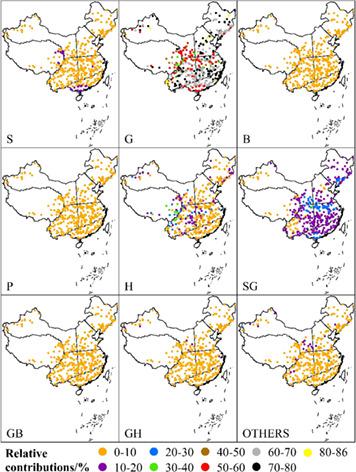当前位置:
X-MOL 学术
›
Int. J. Climatol.
›
论文详情
Our official English website, www.x-mol.net, welcomes your feedback! (Note: you will need to create a separate account there.)
Overall uncertainty of climate change impacts on watershed hydrology in China
International Journal of Climatology ( IF 3.9 ) Pub Date : 2021-06-16 , DOI: 10.1002/joc.7257 Shaobo Zhang 1, 2 , Jie Chen 1, 2 , Lei Gu 1, 2
International Journal of Climatology ( IF 3.9 ) Pub Date : 2021-06-16 , DOI: 10.1002/joc.7257 Shaobo Zhang 1, 2 , Jie Chen 1, 2 , Lei Gu 1, 2
Affiliation

|
The hydrological projections provided by the outputs of Global Climate Models (GCMs) combining hydrological models include multi-source uncertainties, which may challenge the formulation of relevant adaption and mitigation policies. In this paper, the overall uncertainty and the relative contribution of each uncertainty component were investigated for hydrological projections over 408 watersheds in China by using 3 shared socioeconomic pathway emission scenarios (SSP1-2.6, SSP2-4.5, and SSP5-8.5), 21 GCMs, 8 bias correction methods, 4 hydrological models, and 2 sets of optimized hydrological model parameters. The results show that the total uncertainty (T) is mainly contributed by uncertainty related to global climate models (G), with the mean percentage ranging from 60.4 to 64.1%, followed by the interaction uncertainties among all components, with the mean percentage ranging from 22.0 to 26.4%. The uncertainty contribution of hydrological models (H) (6.1–9.4%) ranks third, followed by emission scenarios (S) (2.9–5.9%) and bias correction methods (B) (0.2–1.1%). The uncertainty contribution of the optimized hydrological model parameters (P) (0.2–0.3%) is almost negligible. In terms of spatial variability, the relative contribution of uncertainty related to global climate models (G) is the highest in the near future for northern China (67.5–70.6%) and in the far future for southern China (66.1–66.7%). However, it was found to be lower for the Tibetan Plateau and northwestern China (45.3–57.9%) in the near and far future. The relative contribution of hydrological model uncertainty is higher for southwestern and northwestern China and the Tibetan Plateau (7.2–19.5%) and lower for northern, eastern, and southern China (2.5–6.6%). This study highlights the importance of including multiple GCMs and hydrological models in hydrological impact studies to consider their overall uncertainty. The development of global climate models and hydrological models is still the best way to reduce the uncertainty of climate change impact studies.
更新日期:2021-06-16



























 京公网安备 11010802027423号
京公网安备 11010802027423号